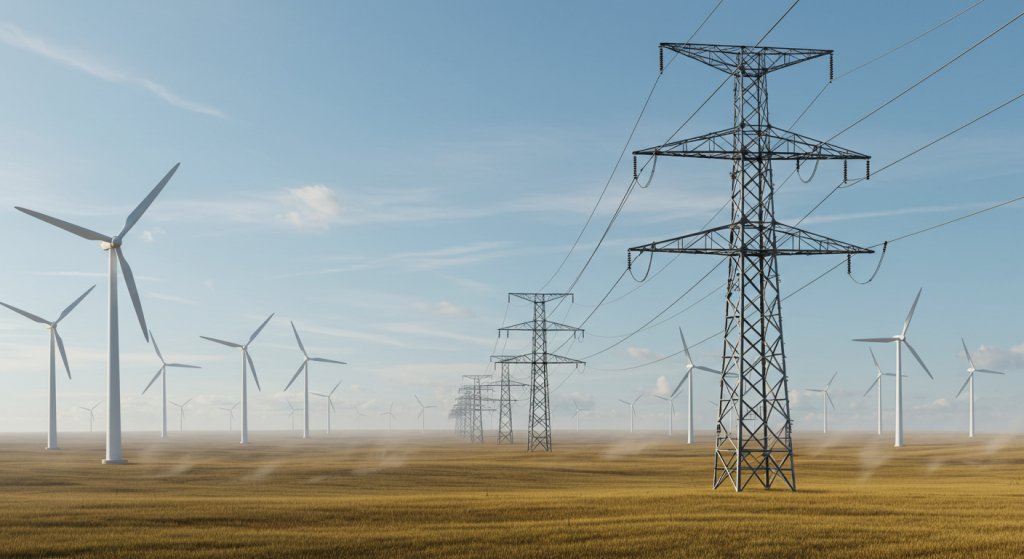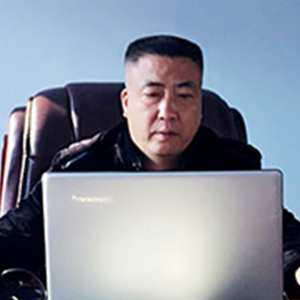Contatc
Explore the Role of Transmission Lines in Renewable Energy Grids
2025-02-08
The Role of Transmission Lines in Renewable Energy Grids
Transmission lines remain essential for the growth of renewable energy grids as all three renewable power sources wind, solar and hydropower gain increasing significance. These power transmission systems provide the essential infrastructure to bind renewable energy source networks to electrical distribution systems to deliver sustainable energy to end-users. This article describes the role of transmission lines in renewable energy grids by discussing vital infrastructure components alongside present difficulties and emerging technologies as well as anticipated future energy transmission trends.
Understanding Transmission Lines and Their Importance for Renewable Energy Grids
Electrical transmission lines operate at high voltages to deliver power from power plants across substations all the way to end users’ facilities. These lines act as essential components to transfer renewable energy from solar power facilities alongside wind farms together with hydropower and offshore wind stations reliably.
Advanced renewable energy projects require proper transmissions for successful distribution of power and effective operation. Efficient power transmission operations enable renewable energy to travel through extensive distances while reducing power losses and circumventing power grid congestion.
The Growing Demand for Renewable Energy Transmission
A worldwide move toward renewable energy relies on the total reconstruction of current energy transmission systems. The rising demand for clean energy requires an upgrade of renewable energy transmission systems for current needs. Renewable energy power transmission enables the development and connected operation of substantial renewable generation systems which brings these projects into synchronized network operation.
The Role of Smart Grids in Renewable Energy Transmission
Smart grid technologies actively enhance renewable energy transmission by making the current energy grid system more efficient and reliable. Smart grids achieve power management through automated systems containing sensors meters and monitoring devices. The smart grids function as dynamic systems that automatically manage power distribution to maintain efficiency during supply-and-demand changes that protect the system from overloads.
Smart electric grids function as stability maintainers through their immediate response to renewable energy production fluctuations. Smart grids successfully control electricity distribution by changing procurement amounts from supplementary supply sources while wind power levels change.
The implementation of smart grid technologies allows operators to control power flow more precisely to handle unstable renewable energy production effectively. The implementation of this control system works by directing electrical power to the specific areas that require it thus simplifying grid congestion and enhancing operational efficiency.
Flexible AC Transmission Systems (FACTS)
The power industry adopts Flexible AC Transmission Systems (FACTS) as an emerging solution to boost the performance of current transmission infrastructure along with HVDC and HVAC systems. The power capacity of transmission lines increases and voltage and power flow control improves through installation of FACTS devices which enhance renewable energy transmission efficiency.
Overhead and Underground Transmission Lines
The method between deploying overhead transmission lines and underground transmission lines determines the transmission methods for renewable energy. Underground transmission lines position themselves as a superior option to overhead lines since they reduce environmental as well as visual disruptions from transmission facilities. Submarine cables serve as the connecting link between renewable energy sources and the power grid infrastructure for both offshore wind farms along other coastal renewable power projects.

About X.Y. Tower – A Leading Power Line Components Provider
Founding its operations in 2008 Sichuan XiangYue Power Line Components Co. Ltd (X.Y. Tower) emerged as an electrical power company that produces high-quality products through comprehensive services. As an expert in galvanized steel structures, X.Y. Tower creates solutions specifically for the global energy market’s power line towers as well as substation structures, communication towers, electrified railway structures, and additional applications.
Extensive Product Portfolio
The product line of X.Y. Tower extends to power line towers that can handle voltages extending to 500kV. Apart from power line towers the company manufactures substation structures communication towers and railway electrification structures. X.Y. Tower builds its products to overcome any climate challenge and pass international safety and quality requirements.
Advanced Manufacturing Capacity
X.Y. Tower produces its products through 10 automated production lines which operate from 33,000 square meters. The production facilities of the company operate at an annual rate of 40,000 tons and deliver high-quality products for large-scale applications.
Global Reach and Expertise
X.Y. Tower holds the position of China’s biggest steel tower exporter from the southwestern area and distributes products to 18 countries spanning five continents. The company extends its services to 36+ international customers by providing customized solutions for clients worldwide.
The Economic and Environmental Benefits of Renewable Energy Transmission
Renewable energy transmission provides major economic advantages together with its technical benefits. Clean energy installation becomes more possible when we enhance our transmission systems thereby decreasing carbon footprints and energy prices for citizens.
Economic Development and Job Creation
The enhancement of transmission infrastructure generates different types of jobs starting with construction and engineering roles which lead to sustained operation and maintenance tasks. Economic development relies on a robust transmission network since it delivers reliable cost-effective electricity to industries and communities.
Environmental Sustainability
The successful distribution of renewable power remains essential for achieving worldwide progress toward a carbon-diminishing ecosystem. Greater renewable energy distribution helps society decrease dependence on fossil fuels while decreasing environmental pollution. The transformation toward renewable energy depends heavily on improved transmission lines which specifically focus on handling power from renewable sources that require extended transmission distances.
Building a Future with Reliable Renewable Energy Transmission
Renewable energy transmission systems ensure better energy security while delivering sustainable power supply to consumers. Multiple energy source diversity and optimized grid integration systems help decrease power supply instabilities which leads to stronger grid energy systems.
Future Perspectives of Renewable Energy Transmission Systems will mold the coming generation of power distribution.
Modern renewable energy transmission represents an optimistic future since many advanced technological developments await us. HVDC systems and smart grid innovations combine to create a power transmission age that brings sustainability together with efficiency alongside reliability.
The complete achievement of renewable energy demands resolving regulatory barriers as well as winning public support together with reducing infrastructure construction expenses. The commitment of nations toward renewable energy gains will enhance the necessity for modernized transmission networks that show no signs of slowing down.
Conclusion
The role of transmission lines in renewable energy grids is pivotal to ensuring a cleaner, more sustainable future. From supporting the integration of renewable energy into the grid to improving grid stability and reducing transmission losses, these systems are the backbone of a successful energy transition. As we face the challenges of integrating renewable energy at scale, it is essential to invest in advanced transmission technologies and grid modernization. Whether through HVDC, smart grids, or other innovations, the future of renewable energy transmission will play a critical role in ensuring reliable, affordable, and sustainable energy for all.

Hey, I’m Chunjian Shu
"X.Y. Tower: Reliable, innovative solutions for high-quality towers and electrical equipment with professional service.
